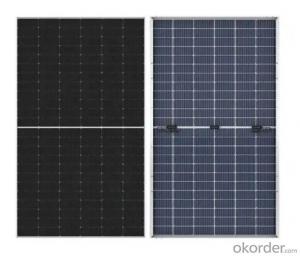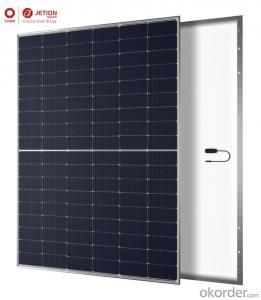Jinko Solar Inverter
Jinko Solar Inverter Related Searches
Best Inverter Solar Panel Solar Panel On Roof Rack Inverter To Solar Panel Ratio Solar Panel Decking Lights Solar Panel Inverter Box 1000 Watt Solar Panel Inverter 12 Volt Solar Panel Inverter Plastic Solar Lanterns Buy Solar Panel Inverter Solar Panel Inverter CostHot Searches
Type Of Inverter For Solar Types Of Inverter For Solar Used Solar Inverter For Sale Inverter Size For Solar System Solar Edge Inverter For Sale 5kw Solar Inverter For Sale Solar Inverter For Sale Solar Inverter For Battery Solar Inverter For Split Ac Solar Inverter For Laptop Solar Inverter For Fridge Solar With Inverter Price Solar Inverter With 2 Battery Solar Inverter Price In China Best Solar Inverter In China Solar Inverter Price In Dubai Solar Inverter Price In Uae Solar Inverter Price In Kenya Solar Inverter Price In Kerala Solar Hot Water Collectors For SaleJinko Solar Inverter Supplier & Manufacturer from China
Okorder.com is a professional Jinko Solar Inverter supplier & manufacturer, offers integrated one-stop services including real-time quoting and online cargo tracking. We are funded by CNBM Group, a Fortune 500 enterprise and the largest Jinko Solar Inverter firm in China.Hot Products
FAQ
- i used 734 killowatts of power last month, any idea on how many solar panels i would need. What im looking for is to somehow hook up my central air to solar panels.
- Ideally, you should not be trying to run individual appliances off of a solar panel. What you should be doing is selling the power harvested from these panels back to the power company as a savings from your power bill. Here in southern California I have heard of people actually receiving monthly checks from the power companies.
- The amount of roof space needed for solar panels depends on several factors, such as the size and efficiency of the panels, the energy needs of the household or building, and the available sunlight in the area. Generally, it is recommended to have around 100 to 400 square feet of unshaded roof space per kilowatt of installed solar panels. It is best to consult with a solar professional to determine the exact roof space requirements for your specific situation.
- So you know how the bigger the surface area exposed to the heat radiation means the quicker it'll heat up.Is this what happens with solar panels, they have a large surface area exposing to the sun, so they can get more heat?
- Solar panels do heat up. But that's because the radiant energy from the Sun that lies within the infrared (IR) band of energy causes the material in the panels to heat up. And that's the same for any body that has the Sun shine on it. Your face, for example, will heat up while you get a nice tan on the beach. That's due to the heat producing IR radiant energy. Now if those solar panels are supposed to heat buildings etc., that heat produced in the panels when the IR strikes them will be transferred, usually by some fluid, to floors of the rooms to be heated. And as the amount of heat generated by the Sun is proportional to the area of the solar panels, bigger areas of panel will generate more heat than smaller areas. Photoelectric solar panels are another kind. Here the interest is in the visible band of radiant energy from the Sun. Heat, from IR, is still there, but it is not the product sought by PE solar panels. The visible light photons knock off loosely bound electrons from the photoelectric material (typically silicon based) and those electrons are siphoned off as current. That's where the electrical power comes from for buildings using PE solar panels to provide their own electricity.
- Yes, there are several safety precautions to consider when installing solar panels. Firstly, it is important to work with a qualified and experienced installer who follows industry standards and guidelines. Adequate training and knowledge of electrical systems are crucial to ensure safe installation. Additionally, proper precautions should be taken when working with heights, as solar panels are typically installed on rooftops. This includes using appropriate fall protection equipment and following all relevant safety protocols. It is also essential to turn off electricity before starting the installation process to avoid electrical shocks. Finally, regular maintenance and inspections should be conducted to ensure the panels are in good condition and operating safely.
- Yes, solar panels can be installed on a factory or industrial facility. In fact, many factories and industrial facilities are increasingly turning to solar power as a sustainable and cost-effective energy solution. Installing solar panels on such facilities can help reduce electricity bills, decrease reliance on fossil fuels, and contribute to a greener and more environmentally-friendly operation.
- Yes, solar panels can definitely be used in deserts. In fact, deserts are considered ideal locations for solar power generation due to their high solar irradiance and vast open spaces. The availability of ample sunlight allows solar panels to efficiently convert sunlight into electricity. Additionally, deserts often have less cloud cover and atmospheric interference, resulting in more consistent and predictable solar energy production.
- Yes, solar panels can be damaged by hail. Hailstones, especially larger ones, can cause cracks or dents in the glass surface of solar panels, which may impair their efficiency and performance. It is important to note that the severity of the damage will depend on the size and speed of the hailstones, as well as the quality and durability of the solar panel materials.












































